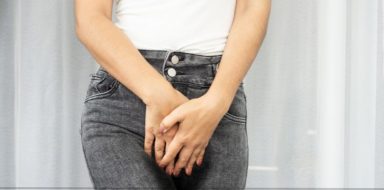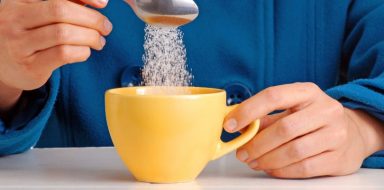Misconceptions About OAB
Overactive bladder (OAB) isn’t uncommon, but because so many people suffer in silence there are a lot of misconceptions about OAB causes, symptoms and treatments floating around. One thing is for sure: OAB isn’t an inevitable condition, and you don’t need to give in to the embarrassment and discomfort.
Studies have shown that the less you understand your condition, the harder it is to manage and the lower your quality of life is. Since your bladder function plays a big role in how you live each day, you owe it to yourself to learn the facts about the symptoms and treatment options so you can take back some control. Start by breaking through these misconceptions about OAB.
1. Childbirth Causes OAB
In some cases, pregnancy and childbirth can weaken the pelvic floor muscles, which help to support your bladder and keep urine from leaking out. However, OAB involves more than just muscle weakness, so while childbirth may worsen your symptoms, it doesn’t cause OAB.
On the other hand, the exercises you do to tone your pelvic floor after giving birth can also help to relieve OAB symptoms. Kegel exercises help train the muscles around the bladder opening to contract firmly, saving you from running to the bathroom at the first hint of an urge to go.
2. OAB is Chronic and Permanent
While OAB can last for years, proactive management can drastically reduce the symptoms — maybe eliminate them entirely. Although you can’t cure the condition over night, there are several steps you can take right now to alleviate your discomfort and train your bladder to hold more fluid for longer.
A few lifestyle adjustments can go far, especially improvements to your diet and regular Kegel exercises. Also, anti-muscarinic drugs can give your management plan a big boost, so the sooner you see your doctor about your symptoms, the sooner you can find a medication that can bring them under control.
3. Urinating Often is a Normal Part of Aging
Although your chances of developing OAB rise as you get older, the condition doesn’t always wait for middle age. Some people begin to notice symptoms in early adulthood, and in rare cases, childhood.
No matter when OAB hits, it is not a natural and inevitable problem that you must learn to live with. Remember that OAB is a medical condition, which means it deserves careful medical treatment; ignoring the sudden urges to go, occasional leaks and frequent trips to the bathroom aren't going to do you any good.
4. Leaking When You Laugh or Cough is a Sure Sign of OAB
There are a few different bladder conditions that involve a loss of bladder control; little leaks that come with small, forceful outbursts are a sign of stress incontinence. While OAB is a condition that impacts your bladder’s ability to hold urine normally, incontinence is a symptom of a condition.
Stress incontinence can come from weak pelvic muscles, obesity, a urinary tract infection or even hormonal fluctuations — these problems either impair the muscles around the bladder opening and the urethra or put an undue amount of pressure on the abdomen. In some cases, stress incontinence occurs alongside OAB, a condition known as mixed incontinence.
5. OAB Affects Only Women
While it is true that OAB affects females more often (experts estimate that around 16% of women live with OAB symptoms), men aren’t immune to the condition.
Women may begin to report bladder issues following childbirth or as menopause approaches, but men tend to notice symptoms a bit later. In fact, more men over age 60 complain of OAB compared to women of the same age. Men who notice OAB symptoms should head to the doctor for a closer examination — in some cases, an enlarged prostate could be causing the trouble.
This article will explore arthritis and bladder control, as well as how to control your bowels. Read on to learn more.
6. OAB is Due to a Small Bladder
It’s not the size of your bladder that matters, but rather how the muscles behave. OAB causes your bladder wall (the detrusor muscle) to contract too often and at unfortunate times. Faulty signals between the brain and bladder may be at the root of the problem, especially if you suffer from MS or have had a stroke.
On average, an adult bladder can hold about 2 cups of fluid; if you cannot seem to hold that much, you can work up to that goal with bladder training exercises. Learning to postpone bathroom trips by a few minutes at a time can eventually help you to hold your bladder comfortably and avoid accidents.
7. If You Have OAB You Should Drink Less Water
It’s natural to assume that taking in less liquid means you will need to go less often, but it doesn’t quite work that way when OAB is involved. You will have a smaller amount of urine in your bladder, but that urine will be more concentrated and will therefore irritate your bladder, leading you to urinate more often.
It’s easy to tell if your urine is too concentrated — it will be dark yellow and smell strong — but it is easy to bring it back to normal by drinking a couple more glasses of water. It’s important to aim for six to eight glasses of water a day, but remember that fresh fruit and veggies count towards your fluid intake too.
8. OAB Medications Are All the Same
Different medications work in different ways. There are several effective OAB treatments out there, and it is certainly worth trying a few different ones to find the best fit for you. In most cases, medications work best when coupled with some smart lifestyle changes.
Side effects are not uncommon, but they are generally mild — dry mouth and constipation are typical complaints. Of course, if you cannot handle the side effects, you can try another type of delivery system (patches or gels may be easier on your system than pills).
OAB is clearly an embarrassing condition, but keeping it to yourself will only make it more difficult to live with. Talk to your doctor — they have heard it all before, so there is absolutely no reason to hold back, and you will soon be on track to a much less stressful life.







